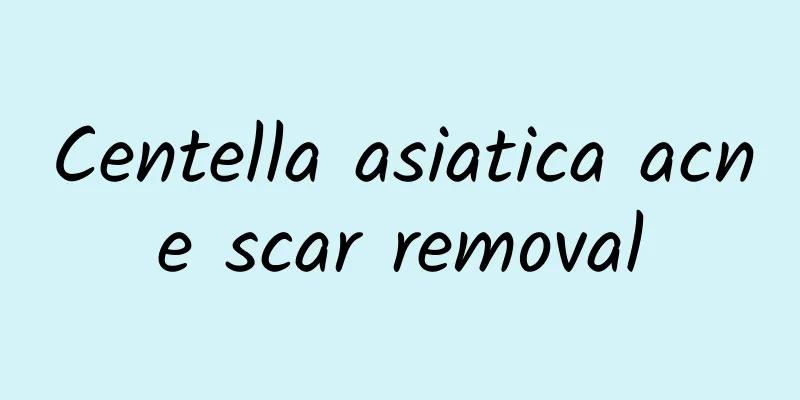The efficacy and function of duck-foot umbrella

|
Chinese medicinal materials are very common, and there are many types of them. There are also some differences in their efficacy. Therefore, you need to have a good understanding before choosing. So do you know about the medicinal material "Mushroom"? [Other names] Tung tree, duck feet, thorny duck feet, seven-leaf bark, palm leaf wood [Source] Medicinal material source: the root, bark or leaves of the Araliaceae plant. [Original form] Shrub or tree, 3-20cm high. The bark is gray-brown, the twigs have prickles, and the young branches are densely covered with red rusty hairs. Palmate compound leaves; petiole up to 70m long, glabrous or with residual red rusty hairs on the upper end; leaflets 5-9, petiolules 2-9cm long; leaflets thin leathery, elliptic to broad lanceolate, or ovate-oblong, 15-35cm long, 6-15cm wide, apex acuminate, base usually cuneate to rounded, sparsely covered with red rusty stellate hairs on both sides when young, soon falling off and becoming almost glabrous; margin entire or sparsely serrulate; lateral veins 7-9 pairs, obvious, reticulate veins not very obvious. Umbels are clustered at the top of the stem, forming a large drooping panicle, up to 40 cm long, or longer, with red rust-colored hairs on the main axis and branches, which gradually fall off later; umbels are 2-3 cm in diameter, with 20-40 flowers; peduncle is 2-5 cm long, extending after flowering; calyx is short, about 1 mm long, with red rust-colored hairs, and 5 sharp teeth on the edge; petals are 5, white, oblong, initially covered with red rust-colored hairs, which fall off later and become glabrous; stamens are 5, about 2 mm long; ovary has 2 chambers, the disk is raised, semi-inferior, and the styles are fused into a column. The berries are broadly flattened spherical or hemispherical, 7-9mm in diameter, purple-black when ripe, with persistent styles 1-2mm long and fruit pedicels 1.2-1.5cm long. The flowering period is from June to August, and the fruiting period is from January to February of the following year. [Habitat distribution] Ecological environment: Growing in forests at altitudes ranging from several hundred meters to 2400m. 【Nature and flavor】 MSG is slightly pungent; bitter; neutral 【Functions and indications】 Dispel wind and dampness; disperse blood stasis and relieve pain. It is mainly used for colds, fever, cough, rheumatic pain, lumbar muscle strain, abdominal pain, swelling and pain caused by falls. [Usage and Dosage] For oral use: decocted in water, 15-30g. For fresh product, double the dosage. For external use: take appropriate amount, decoct in water for washing; or mash the fresh product, stir-fry with wine and apply hot compress. 【Excerpt】 Chinese Materia Medica Through the detailed introduction of the duck-foot parasol in this article, we can learn about the related functions and eating methods of the duck-foot parasol. The value of the duck-foot umbrella can be seen from its efficacy, which fully reflects the importance of the duck-foot umbrella. |
<<: The efficacy and function of watermelon seeds
>>: The efficacy and function of duck foot polygonum
Recommend
Is soaking food dangerous? Will it cause aflatoxin poisoning? Friends who love rice noodles and black fungus, please pay attention!
gossip "A woman in Yongcheng, Henan died aft...
The efficacy and function of landmine flower
Many people are not particularly familiar with th...
Is there psychology in lottery? Come and see what your chances of winning are
Lottery, game draw, all kinds of lottery activiti...
The naming of this most mysterious particle carries the resentment of many American physicists. The truth behind it is...
Nobel Prize winner and British theoretical physic...
The efficacy and function of water bead grass
I believe many people are familiar with the Chine...
The efficacy and function of cherry forehead
The Chinese medicine Sakura is a relatively good ...
10 Questions About Lemonade Answered
Whenever I talk about lemonade, I get a ton of qu...
No matter how much you calculate, don’t miss this trillion-dollar opportunity!
Mixed Knowledge Specially designed to cure confus...
The efficacy and function of Guizhou Selaginella
We can often see Selaginella in our daily life. S...
How many grams of strychnine can kill a person
Everything depends on being appropriate. Only whe...
Chongqing finally welcomes artificial rainfall! Experts: This cloud has been "audited"
In recent days, News of high temperature and drou...
The efficacy and function of coix root
As people's research on traditional Chinese m...
The role of taurine granules
Taurine granules are a very common medicine in ou...
The efficacy and function of loquat leaf dew
As a traditional Chinese medicine, loquat leaf de...
Surprise! The "supermoon" will be here for the Mid-Autumn Festival. This year, you can "feast your eyes"
The bright moon rises over the sea, and the world...









